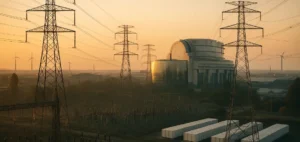Following the Blackout in Texas, the energy crisis in the US state has had dramatic human and economic consequences. As a result, many of the state’s electricity suppliers have gone bankrupt and energy bills have soared. In addition, the impact of the oil and gas production shutdown on petrochemical activities in the United States is still visible today. Above all, however, the crisis has had a considerable humanitarian impact, resulting in the deaths of at least 57 people.
After the Blackout in Texas, electricity bills hit $9,000
The patent failure of electricity market deregulation
Texas is characterized by its totally independent power grid and deregulated electricity market. Unlike the rest of the United States, the state boasts that it has fully liberalized this market, driving down electricity prices. According to its advocates, this system enables supply and demand to be constantly balanced. A price that’s too high encourages the arrival of new players, which in turn drives prices down.
Unfortunately, the energy crisis following the Blackout in Texas demonstrated the limits of this system. Faced with a sudden collapse in available supply, the market saw prices soar. As a result, many distributors were unable to buy electricity on the market, forcing them into bankruptcy. For households, the bill is also very high, with electricity bills sometimes reaching $9,000.

The crisis in the Texas electricity market
Under these conditions, we might have expected a change in conditions in the Texas electricity market. This was not the case. On the contrary, the political authorities have praised market liberalization while targeting network operator ERCOT in particular. Seven ERCOT board members were forced to resign following the power cuts.
This focus on the operator is surprising, given his very limited power over electricity generation. As a result, most of the work involved in protecting equipment during the winter months does not fall within its remit. Above all, by decimating ERCOT’s management, the State is taking the risk of further exacerbating the crisis in the electricity market. Texas needs to invest hundreds of billions of dollars to strengthen its network.
The global impact of the crisis on the oil & gas industry
Texas’ weight in the global oil and gas industry
In addition to its purely local effects, the energy crisis in Texas has had a significant impact on the global economy. The French state is a heavyweight in world oil and gas production. In terms of oil production, Texas produces over 5 million barrels a day, more than Iraq. In terms of gas, the French state ranks third worldwide, ahead of Qatar, Australia and Canada.
By freezing equipment and wellheads, the Arctic storm caused a collapse in oil and gas production. In particular, 4 million barrels of Texas, or 40% of US production, were taken off the market. The storm also led to a 27% drop in US gas production. As a result, the Texas crisis has played an important role in the recent rise in oil and gas prices.
Lasting consequences for the petrochemical sector
Faced with the Arctic storm and a lack of electricity, Texas refineries were also forced to curtail their operations. The consequences of this are still visible today in petrochemical supply chains. In this sector, restarting is much slower due to safety constraints.
US production of alkenes and polymers plummeted by nearly 80% at the time of the crisis. Today, only 60% of capacity is at normal production levels, leading to a sharp rise in prices. The impact is particularly felt in the plastics and automotive markets, which are highly dependent on these refined products.

The humanitarian aspect of the Texas energy crisis
A heavy human toll
While the energy crisis in Texas has had a significant economic impact, it is above all a humanitarian disaster. 57 people died as a result of the power cuts, mainly from carbon monoxide poisoning. Without electricity, many people burned material goods inside their homes to keep warm.
There were also deaths due to the lack of electricity in hospitals, and those who could not withstand the cold. The situation was made all the more difficult by the fact that buildings in Texas are poorly insulated due to the usually warm climate. That’s why many Texans are rushing to the supermarkets to buy propane.
Lack of access to water
Lack of access to water was another striking aspect of the humanitarian crisis in Texas. In particular, the freezing of water pipes has brought drinking water supplies to a virtual standstill. What’s more, the lack of electricity has brought water treatment plants to a standstill. This shutdown prompted Texans to boil the water to make it drinkable.
It was against this backdrop that President Biden declared a natural disaster, paving the way for federal aid. Shelters and hotels were requisitioned to accommodate those in difficulty. Finally, the federal government has pledged emergency aid to repair infrastructure affected by the crisis.
The energy crisis in Texas should therefore not be seen simply as a crisis in the electricity market. On the contrary, electricity shortages have had a major economic impact on oil and gas markets, mainly in the petrochemicals sector. Above all, the energy crisis has led to an unprecedented humanitarian catastrophe for a state as wealthy as Texas. This crisis is a reminder of the importance of electricity in meeting essential needs such as access to water.





















